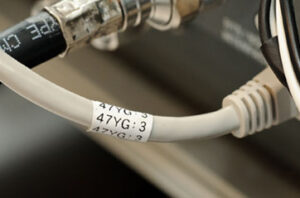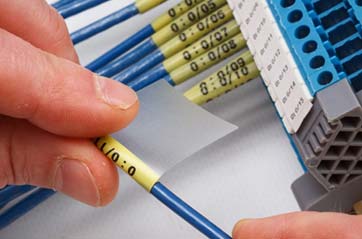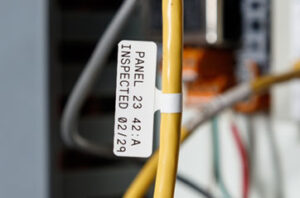Adhesive labels are a great economical way to identify wires in an assembly. (For a look at the overall importance of identifying wires with labels see Wire Labels: Continuous Vs. Ladder Style Heat Shrink Sleeves on page X) As with any technology, the selection of the proper material is the key to success with adhesive labels. Label materials have varying degrees of memory. They come flat and have a tendency to want to remain flat. Absent proper material selection, a label can begin to unpeel or flag up.
Common materials are foil, polyester and vinyl. The most common material used is vinyl due to its durability and conformability.
There are three main types of adhesive labels, wrap around, self-laminating and cable flags.
– Wrap-around labels (Figure 1) are available in different sizes and can be printed on a thermal transfer or laser printer with the legends needed to mark wires or cables. These labels can be ordered pre-printed.





